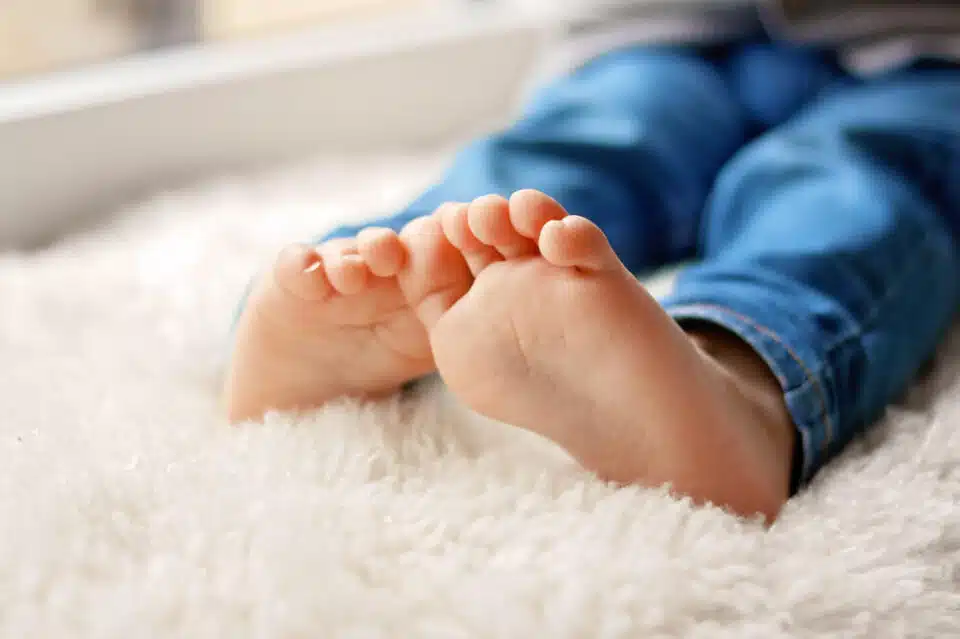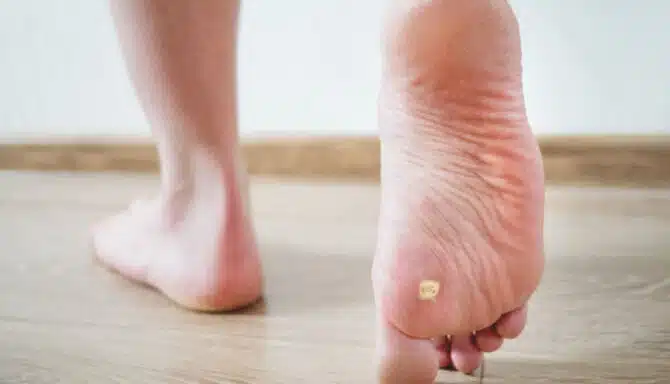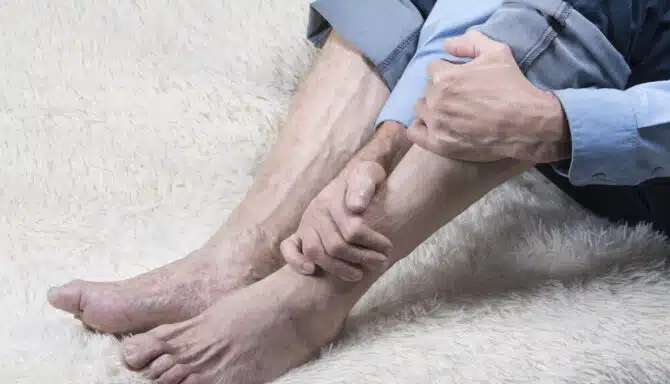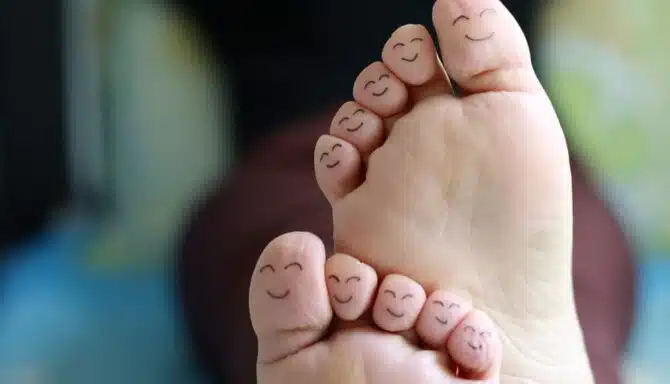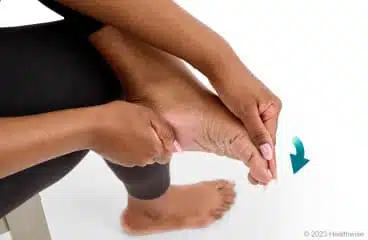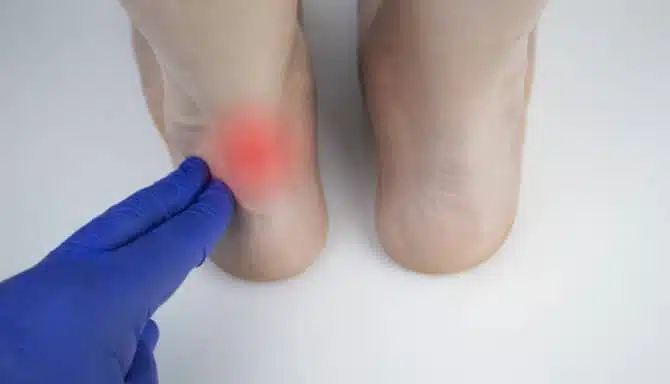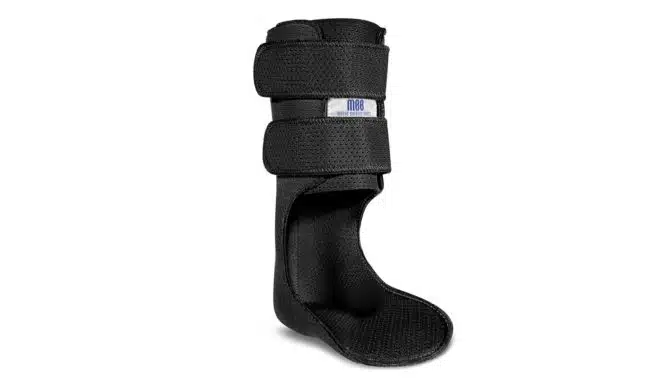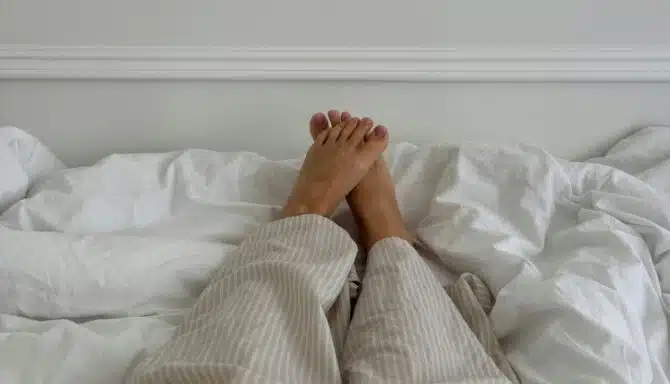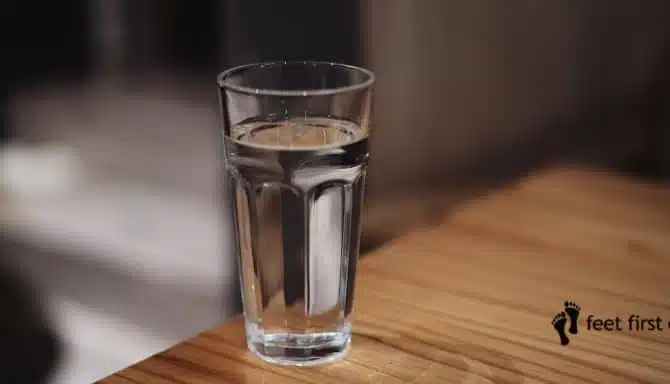One of the best ways to prevent foot pain in your kids is to encourage them to try kid-friendly foot exercises. Children are constantly growing and doing physical activities, so it’s important for them to do exercises that help strengthen their muscles, improve flexibility, soothe pain and enhance coordination. Today’s article will teach you how to select the right exercises for your little ones, and give five examples they can try.
How to Keep Foot Stretches Safe for Kids
It’s important to ensure that the exercises are safe, effective, and appropriate for their age and development stage. Here are a few key factors to look out for:
- Gentle and controlled movements: Stretches should never cause pain— which is also true for adults. Feeling “the burn” or feeling the stretch work in the appropriate area is very different from feeling pain. Furthermore, kid-friendly stretches should involve slow, controlled movements. If a stretch feels too intense or painful, it should be stopped. Kids’ muscles and tendons are still developing, so overstretching can lead to injury.
- Age-appropriate: The stretch should be suitable for the child’s age and physical development. For example, a 4-year-old might not perform the same exercises as a 12-year-old.
- Supervision: Parents should play an active, observant role in their children’s foot health. Always supervise during foot stretches to ensure they’re performing them correctly and safely. Guide them through the stretch, making sure they aren’t twisting or forcing their bodies into unnatural positions.
- Short and frequent sessions: Kids typically benefit from shorter stretching sessions, as their attention spans are limited and their muscles can become fatigued quickly.
- Consult a foot specialist: A foot care professional, like a chiropodist or podiatrist at a foot clinic can explain what type of stretches and exercises your child will benefit from the most. Booking a foot assessment for your kids is a great first step!
Top 5 Kid-Friendly Foot Exercises
- Pen pick-ups
- Frozen water bottle rolls
- Seated hamstring stretch
- Calf stretches
- Flat feet exercises
Pen Pick-Ups
A good stretching tip for kids’ feet is to make stretches as interactive and fun as possible. Pen pick-ups are great foot exercises for children as it allows them to focus on a task, which will hopefully keep them from getting restless or distracted. They will love the challenge of picking up every single pen and putting them in the bowl – proudly accomplishing their goal while simultaneously taking care of their foot health. You an also do this exercise with objects like marbles and lego (which could serve the dual-purpose of strengthening their feet while getting them to put their toys away!)
This simple exercise strengthens the intrinsic muscles of the foot, which support the arch and contribute to better balance and stability. By taking care of these muscles early, children can reduce the risk of developing common foot issues— ranging from plantar fasciitis, to even arthritis or bunions in their golden years.
Additionally, the exercise promotes coordination and fine motor skills by challenging kids to use their toes in a precise and controlled manner. This activity can also help with flexibility, ensuring that the joints in the toes and feet stay mobile and healthy, which is particularly important for growing children.
How to do it:
- Sit on a chair with feet flat on the ground.
- Use the toes to pick up pens one at a time. Small objects like pencils or marbles can also work.
- Place each pen into a bowl.
- Repeat several times for each foot.
Seated Hamstring Stretch
While not specifically a foot exercise, stretching other parts of the body have a positive affect on foot health — everything is connected, from the toes to the head!
The seated hamstring stretch is a great option for kids experiencing growing pains. These aches often present as a throbbing sensation in the legs, thighs, or behind the knees. Stretching the hamstrings can help relieve this discomfort, not to mention tight hamstrings are linked to muscle imbalances that may lead to knee or ankle pain in the future.
It’s worth noting that “growing pains” is somewhat of a misnomer. Despite the name, there is no scientific evidence that growth itself causes pain. Instead, these aches are more likely a result of daytime activities that strain muscles, with the discomfort surfacing at night when kids are at rest. This occurs because during growth spurts, bones can grow faster than muscles and tendons, which might cause discomfort.
Hamstring stretches play a key role in alleviating muscle strain associated with growing pains. When kids engage in activities like running, jumping, or climbing, the hamstrings can become overworked and tight. Stretching this muscle group increases flexibility, reduces tension, and improves blood flow, which helps relax the muscles and relieve discomfort. Regular stretching also prevents stiffness, supporting healthy movement and reducing the likelihood of aches caused by muscle fatigue.
How to do it:
- Sit on a chair with the back straight.
- Extend one leg straight out in front.
- Slowly lean forward from the hips, reaching toward the extended leg.
- Stop when a stretch is felt in the hamstring.
- Hold for 30 seconds and repeat on the other leg.
Make sure your child knows exactly where the hamstring (back of the thigh) so they know when it’s working!
Frozen Water Bottle Rolls
Similar to the pen pick-ups, this easy-to-perform exercise is a good option for children as it lets them engage more by incorporating an object with a task.
If you don’t have water bottles at home, your child can use golf, tennis or massage balls. They won’t get the same instant soothing effect you get with the frozen element, and ice can be more ideal for muscle strain, but these will still target foot arch pain.
Foot arch pain in kids can arise from a combination of biomechanical stress, growth-related changes, and physical activity demands. As children grow, their foot structure continues to mature, with the arches typically becoming more defined. However, during late childhood and adolescence, factors like growth spurts can create temporary muscle imbalances. As the bones grow rapidly, the surrounding muscles, tendons, and ligaments—especially those in the arch—may struggle to keep up, resulting in tightness and strain. This can be particularly noticeable in active older kids, as their physical activities intensify with sports and other high-impact movements, placing additional stress on the plantar fascia and intrinsic foot muscles.
Biomechanical issues like excessive ovpronation from having flat feet (rolling inward of the foot), or supination (rolling outward) from having high arches can further contribute to arch pain. These movement patterns lead to uneven distribution of weight and abnormal stress on the plantar fascia and Achilles tendon, which can cause inflammation and discomfort. Adolescents who participate in sports like basketball, soccer, or gymnastics may be especially prone to arch pain due to the repetitive jumping, running, and pivoting that challenge the foot’s structural stability.
How to do it:
- After freezing a water bottle for a few hours, place it on the floor.
- While seated or while standing, roll your foot back and forth over the frozen water bottle.
- Move your foot side to side to massage different areas.
- Continue for a few minutes per foot.
Calf Stretches
Like hamstring stretches, calf stretches are another way to help kids manage aches and pains in the legs. They also benefit foot health by strengthening the Achilles tendon. Targeting the Achilles tendon early improves its flexibility and resilience, reducing the risk of developing Achilles tendonitis later in life, especially for little future athletes. A strong and flexible Achilles tendon adapts better to high-impact activities and repetitive strain.
Kids can develop tight calves due to a combination of biomechanical, developmental, and activity-related factors. Activities like running, jumping, or climbing, heavily engage the calf muscles. Without adequate stretching or recovery, this repetitive strain can lead to chronically tight muscles.
Furthermore, gait abnormalities or alignment issues, such as congenital flat feet, can place additional strain on the calf muscles.
How to do it:
- Straight-Leg Stretch
- Step one leg forward and bend the front knee.
- Keep your back leg straight with the heel pressed into the ground.
- Hold the stretch for 30-45 seconds.
- Bent-Leg Stretch
- From the same position, bend the back knee slightly.
- Feel the stretch lower, near the ankle.
- Hold for 30-45 seconds.
Arch Lifts
As we briefly mentioned, most kids have flat feet until around age 7. This exercise is a good option for younger kids between ages 4-6 who will soon start developing a foot arch, as well as kids who continue to have a minimal or non-existent arch.
This exercise helps activate and strengthen the muscles on the outside of the foot, which play a key role in supporting the arch. For younger kids who are beginning to develop their foot arches, the movement encourages the muscles to work in a way that supports natural foot development.
For kids who still have flat feet or minimal arches, this exercise can provide a gentle way to engage the muscles and ligaments that support the arch, potentially improving the structure over time. By focusing on proper alignment and muscle activation, it promotes better foot mechanics for your little one and helps reduce the risk of discomfort or foot-related issues.
How to do it:
- Stand with the feet hip-width apart.
- Slowly roll your weight onto the outside of your feet.
- Keep your toes relaxed and your ankles straight.
- Hold for 15 seconds.
- Release and repeat 3 times.
